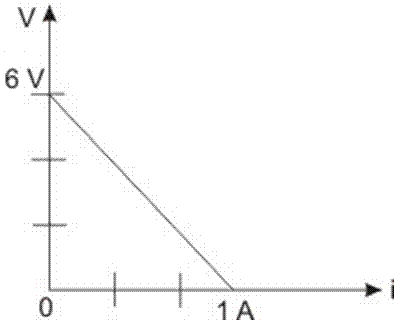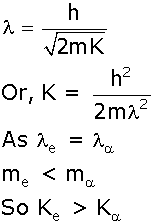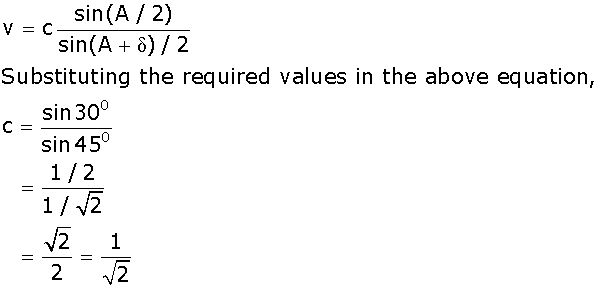CBSE Delhi-Set-1-2008
To Access the full content, Please Purchase
-
Q1
What is the direction of the force acting on a charged particle q, moving with a velocity
 in a uniform magnetic field
in a uniform magnetic field  ?Marks:1View Answer
?Marks:1View AnswerAnswer:
The force is given by

This force is right angles to &
&  .
.
-
Q2
Name the part of the electromagnetic spectrum of wavelength 10-2m and mention its one application. Marks:1View AnswerAnswer:
Microwaves. It is used in radar & communication purposes. -
Q3
A 500
 C
C charge is at the center of a square of side 10 cm. Find the work done in moving a charge of 10  C between two diagonally opposite points on the square.
Marks:1View Answer
C between two diagonally opposite points on the square.
Marks:1View AnswerAnswer:
According to the given condition, we have VOA = VOB
Therefore, work done is given by
W = q( VOB - VOA)
Hence, W is zero.
-
Q4
The plot of the variation of potential difference across a combination of three identical cells in series, versus current is as shown below. What is the emf of each cell?
 Marks:1View Answer
Marks:1View AnswerAnswer:
Since all the cells are connected in series so current flowing through each cell is same. Therefore total resistance given by
Rt = 6/1 = 6
= 6
Internal resistance of each cell is 6/3 = 2
= 2
Now e.m.f. of each cell is = 2 x 1A = 2 volts
x 1A = 2 volts -
Q5
A glass lens of refractive index 1.5 is placed in a trough of liquid. What must be the refractive index of the liquid in order to make the lens disappear? Marks:1View AnswerAnswer:
If refractive index of liquid is equal to the refractive index of material of the lens then only the lens become disappear. i.e. refractive index of the liquid = 1.5 -
Q6
State the reason, why heavy water is generally used as a moderator in a nuclear reactor. Marks:1View AnswerAnswer:
Heavy water is rich in hydrogen, which contain more protons (having mass nearly equal to neutrons). Velocities of neutrons get interchanged with these protons. The neutrons are thus slowed down. Therefore heavy water is generally used as a moderator in a nuclear reactor. -
Q7
How does the fringe width of interference fringes change, when the apparatus of Young’s experiment is kept in a liquid of refractive index 1.3? Marks:1View AnswerAnswer:
When the entire apparatus is immersed in a transparent medium of refractive index
 , then fringe width
, then fringe width
 ' =
' = /
/
 ' =
' = /1.3
/1.3
So fringe width decreases. -
Q8
An electron and alpha particle have the same de-Broglie wavelength associated with them. How are their kinetic energies related to each other? Marks:1View AnswerAnswer:

-
Q9
A ray of light passing through an equilateral triangular glass prism from air undergoes minimum deviation when angle of incidence is 3/4th of the angle of prism. Calculate the speed of light in the prism.
Marks:2View AnswerAnswer:
We have,
A= 600
i1= i2 = (3/4)A = 450 (according to given condition)
Determining the value of ,
,
A + = i1+i2.
= i1+i2.
or 600 + = 450+450.
= 450+450.
 = 900 - 600 = 300.
= 900 - 600 = 300.
The speed of light is given by,

-
Q10
Distinguish between an intrinsic semiconductor and p-type semiconductor. Give reason, why, a p-type semiconductor is electrically neutral, although nh>>ne ? Marks:2View AnswerAnswer:
An intrinsic semiconductor is a pure semiconductor where as a p-type semiconductor is a semiconductor doped with trivalent impurity atoms like boron or gallium. An intrinsic semiconductor has same number of holes and electrons while in a p-type semiconductor the number of holes is greater than the number of electrons. Each hole is associated with a nearby negative-charged dopant ion, and thus semiconductor remains electrically neutral as a whole .



